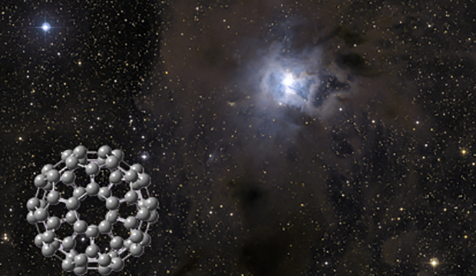Chem. in Interstellar Space

Photo credit: ESA/Hubble
Electronic structure calculations are useful not only on earth but also for studying compounds found in the vastness of interstellar space.
Consider the Iris nebula (illustrated above), a vast cloud of dust in interstellar space, parts of which appear unusually red in the visible range. NGC 7023 is categorized as a reflection nebula, meaning that it scatters light from a nearby star. Detecting and analyzing that light allows astronomers to determine the composition of the dust. The majority of such dust is typically composed of polycyclic aromatic hydrocarbons (PAHs). This object is notable not only for its beauty and astronomical interest, but also as the location where buckminsterfullerene was first observed beyond our planet.
In addition to this example, Exploring Chemistry also discusses how modeling of microwave spectra help elucidate astronomical observations detecting CF+ in the Horsehead mane area of the Horsehead nebula.






